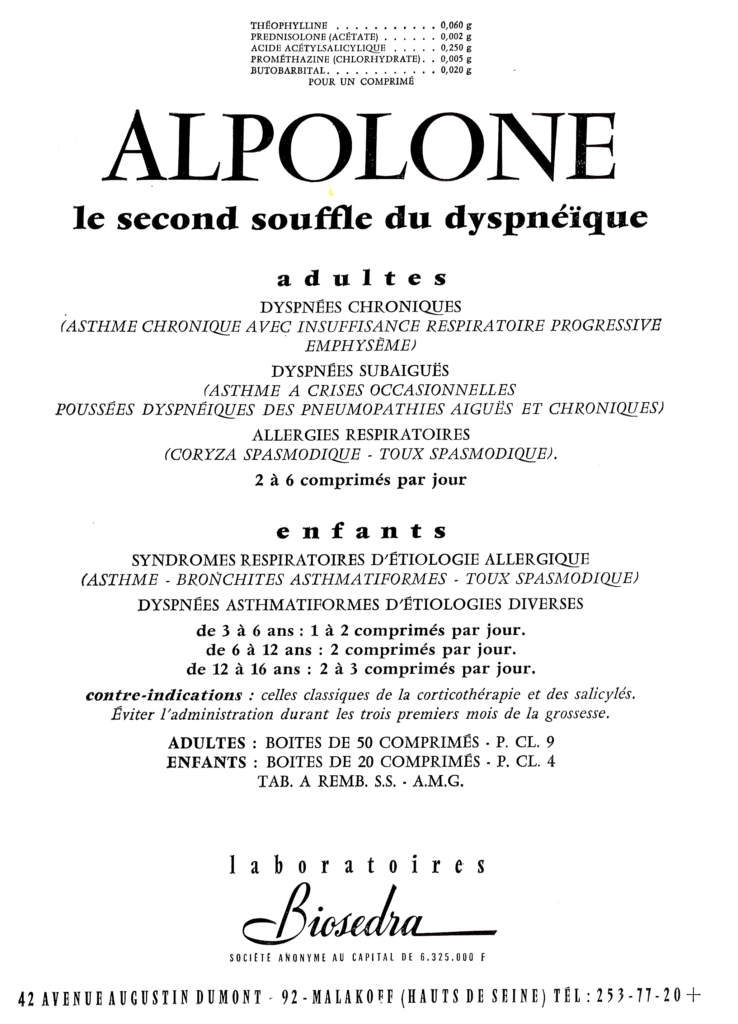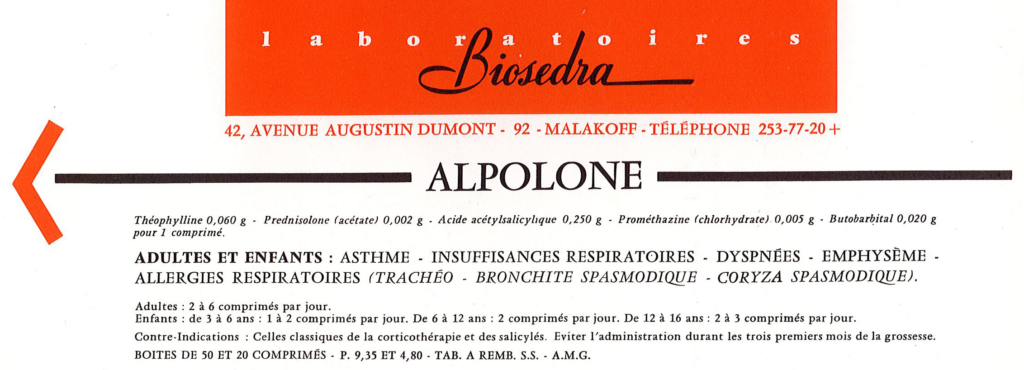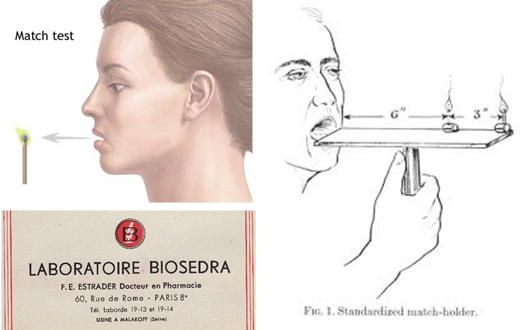The drug Alpolone® was used for the treatment of bronchial disorders, including asthma, asthmatic bronchitis, subacute dyspnea, and respiratory allergies. The oral product (tablets) contained five active ingredients: (1) acetylsalicylic acid (aspirin, as a non-steroidal anti-inflammatory agent), (2) the anti-inflammatory agent prednisolone which binds to glucocorticoid receptors, (3) the phenothiazine derivative promethazine (antagonist of histmine H1 receptor), (4) the alkaloid theophylline which has a smooth muscle relaxant action and (5) the barbiturate product butobarbital which has a sedative action through binding to gamma-aminobutyric acid (GABA) receptors (positive allosteric modulation). The combination of these molecules served to induce a rapid bronchial dilatation to facilitate circulation of air in the lungs. Alpolone was proposed in the early 1970s to treat respiratory dyspneic diseases, notably asthmatic dyspnea in adults and children. It was an efficient drug at that time to reduce difficulty in breathing.


The advert refers to a simple bedside test of respiratory function, the “Snider match test” that consisted for the patient to try to blow out a match placed at 15 cm (9 inches) from the mouth while keeping it wide opened. The test corresponded to an expiratory volume of 1200 ml/sec or 40 liters/min. This simple test was first proposed in 1959 by Thomas H. Snider and his coworkers (Detroit, US) to evaluate the maximum breathing capacity and to easily detect signs of airway obstruction. Later the test was revisited, notably using an ordinary candle rather than a match. These tests provided simple and inexpensive tools for assessing overall respiratory mechanics




